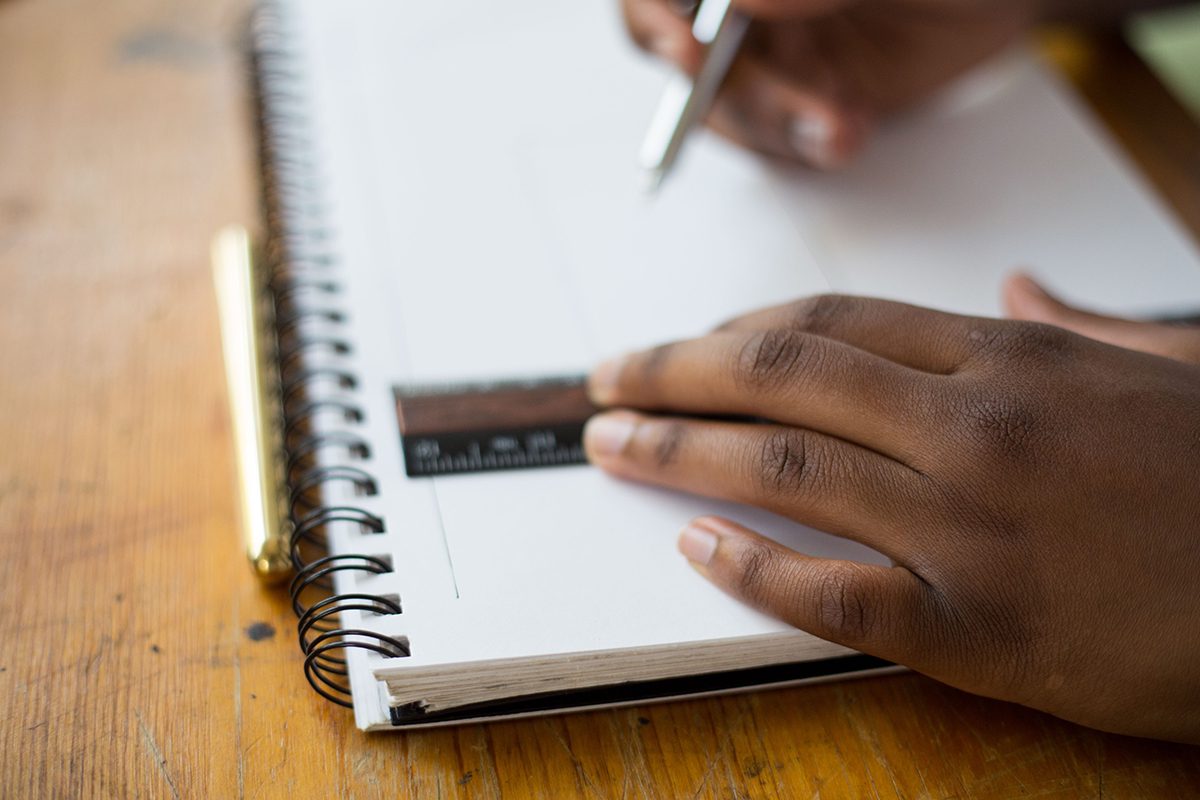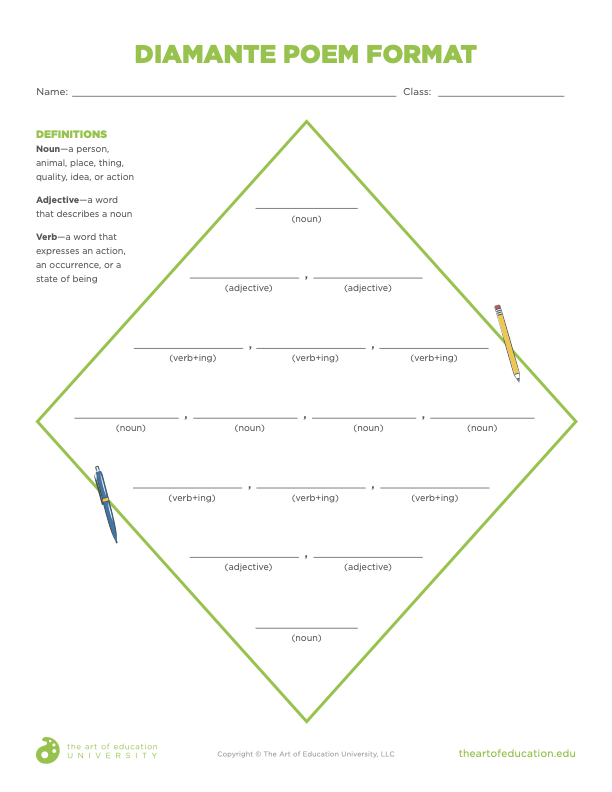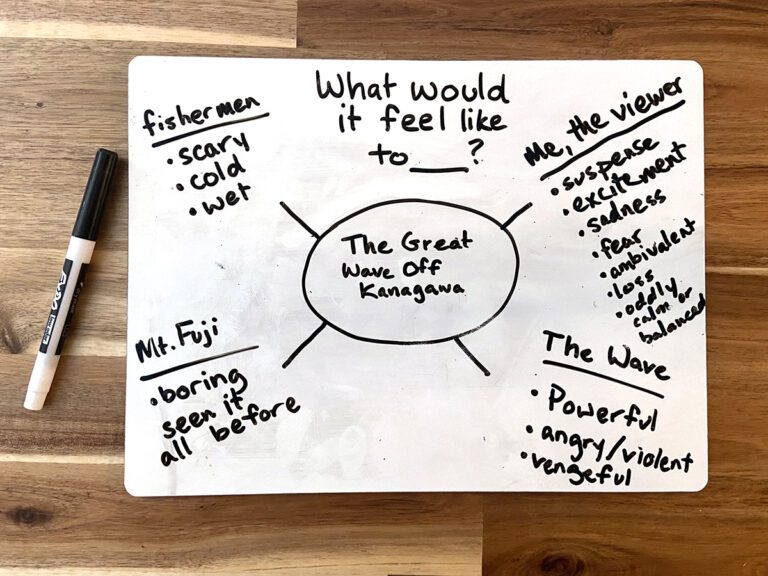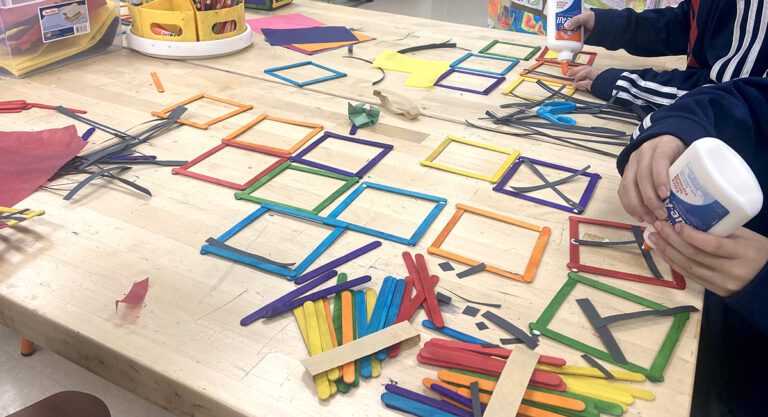As art teachers, most of us love art history. We love looking at art. We love sharing famous and historical artworks with our students. But do we equally enjoy teaching students how to talk and write about art? How about grading art analysis papers or writing pieces? Probably not as much.
The solution? Let’s compose diamante poems that describe an artwork!
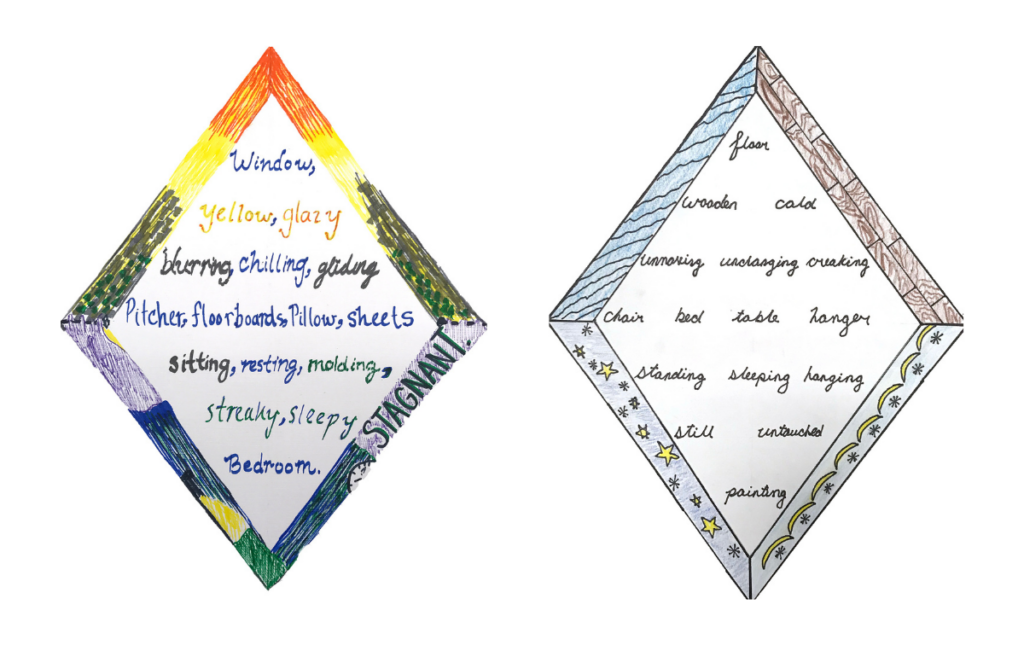
The good news is that we have a fun and engaging way to fuse literacy and art analysis for any level using a simple, plug-in format style poem. It’s the perfect introductory activity to get students to describe what they see in an artwork.
This lesson has it all—a one-day activity that’s even fun to grade! Integrate it in your scope and sequence when you need a quick activity to set up an artist or artwork in a larger unit. You can also turn it into a display in no time. Insert this lesson into your scope and sequence whenever you need a quick activity to set up an artist or artwork in a larger unit.
Why should we connect art and poetry?
Art and poetry have been intertwined for thousands of years, so infusing poetry into the art classroom makes sense. André Breton and Salvador Dali used language and brushstrokes to inform the Surrealist movement. Chinese painters wrote verses in negative spaces to allow their compositions to breathe.
Many people even consider poetry to be another art form! In visual art, the impact of a final painting is immediate because the viewer can experience everything at once. A poem reveals its impact and image gradually as it’s read. Both illustrate a story and express emotion.
The more ways we teach a concept or topic, the more students we will reach. For students uncomfortable with drawing or painting, writing may give them more confidence in your room.
Your administration will sing your praises for infusing literacy into your art room. Post the English Language Arts and Visual Arts standards together to show how art supports a core content area.
This lesson meets the ELA anchor standards under Production and Distribution of Writing:
- CCSS.ELA-LITERACY.CCRA.W.4
Produce clear and coherent writing in which the development, organization, and style are appropriate to task, purpose, and audience. - CCSS.ELA-LITERACY.CCRA.W.5
Develop and strengthen writing as needed by planning, revising, editing, rewriting, or trying a new approach. - CCSS.ELA-LITERACY.CCRA.W.6
Use technology, including the Internet, to produce and publish writing and to interact and collaborate with others.
Now let’s dive into steps so you can replicate this with your students!
Step 1: Select artwork for the subject matter of the poem.
You can select one artwork for the entire class to introduce a unit or lesson later. Students can also choose artwork, perhaps from a pre-approved list, to incorporate variety and student choice.
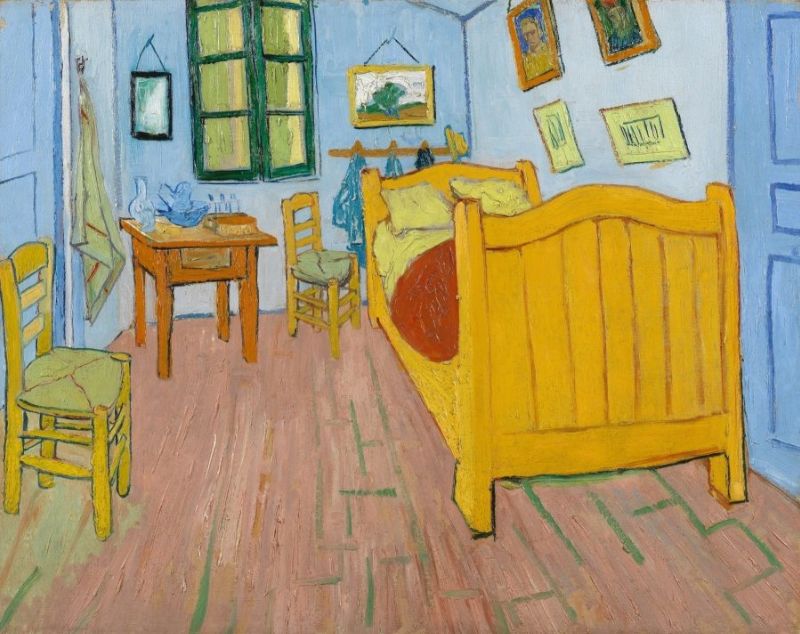
I like to use The Bedroom by Vincent van Gogh. While many students have heard the name van Gogh before or viewed Starry Night, most students have never seen this artwork. This painting is also relatable and straightforward, as most students know what a bedroom is, and many have their own.
Step 2: List 10 nouns in the artwork.
Review what a noun is—a person, place, or thing. Have students find 10 different nouns and write them down in one column in their sketchbooks. Requiring 10 nouns pushes students to examine the artwork closer than a glance. This should take two to three minutes.
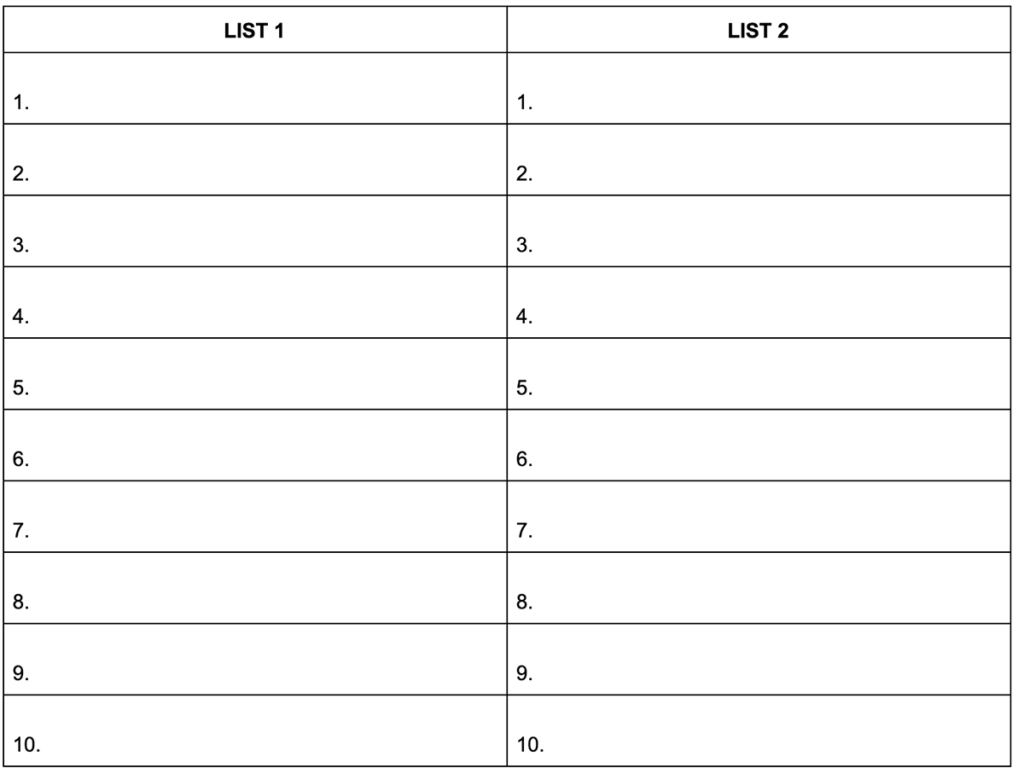
Step 3: Brainstorm 10 adjectives to describe each noun.
Review what an adjective is—a word that describes a person, place, or thing. In the second column, have students come up with a list of 10 different adjectives. Each adjective should describe the noun in the next column. For example, if a noun is “bed,” an adjective to specifically describe the bed in the painting could be “narrow”. Allow three to four minutes to complete this step.
To build a strong word bank that captures the artwork, challenge students to list more complex adjectives. Decide how much to push your students based on students’ abilities and grade level. Encourage students to avoid common adjectives like “rough”, “smooth”, “beautiful”, and “creative”, break out some thesauruses! (Or use an online one.) Remind students that not all synonyms will necessarily apply. Synonyms are similar words but may have slightly different meanings.
Step 4: Introduce the diamante poem format.
At this point, students should have a word bank of 20 words that represent the artwork. The word bank can be a foundation of content to plug into their poem.
Introduce the diamante poem format. Diamante poems are seven-lined diamond-shaped poems. They are often used to contrast two nouns with their mirror-image format.
Students can copy the format into their sketchbooks, or you can provide them with this complimentary handout.
Download Now!
Students use their word banks to compose a diamante poem. They may need or want to come up with additional words for their poem. Encourage advanced students to think more conceptually about their storyline, word relationships, and mood or tone.
Step 5: Transfer onto drawing paper or into a digital platform.
For a quick exercise, the poem can be left as-is in students’ sketchbooks or on the handout. If you want to turn this into a more finished product, transfer the poem onto drawing paper. Demonstrate how to measure out a diamond and evenly space out the words. Students may fill in the border and background with designs that reflect the original artwork and their poem. Show various fonts and discuss how the size and style can also convey meaning to further connect art and literacy.
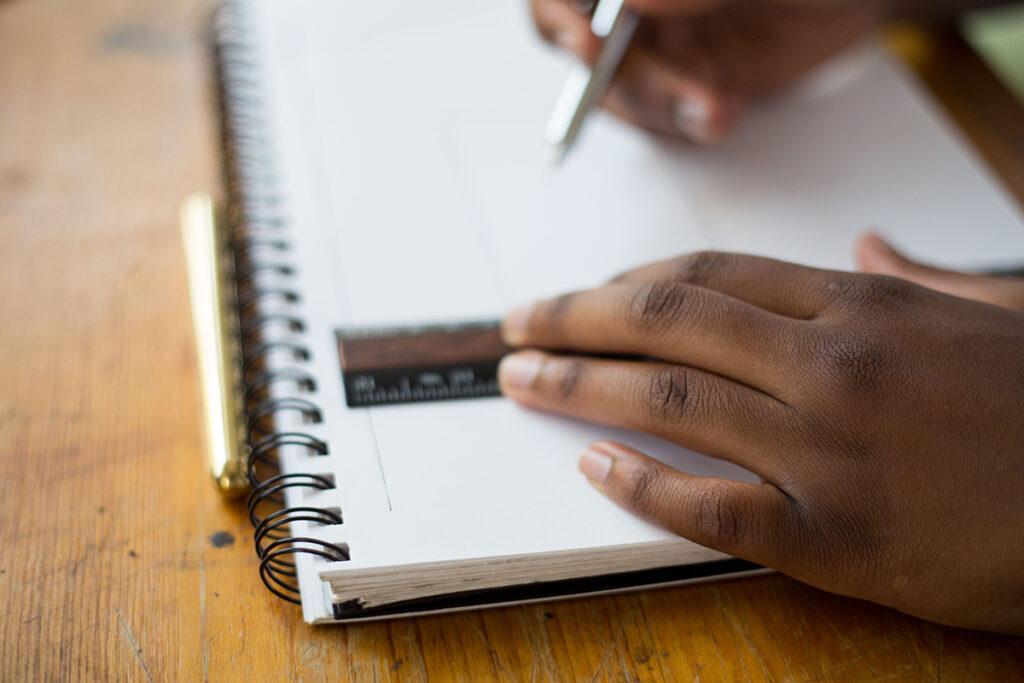
Alternatively, students can create the final poem in a digital platform such as Adobe Spark, Canva, Google Drawings, or even a slide in a slideshow presentation saved as an image or PDF.

Step 6: Display and discuss the artwork!
If you made it this far, don’t stop now! Display the poems in a prominent location in your classroom or school to show support for literacy initiatives. Because this is such a quick lesson, it is also a great way to get art on the walls if you need a display in a pinch. Then, take a few moments to reflect and discuss connections with your students to close out the activity.
Here are some suggestions to wrap up the lesson:
- Read selected poems out loud to the class.
- Record a short video as they read their poems.
- Compare and contrast a poem with the artwork.
- If students chose different artworks, match the artwork to the corresponding poem.
- If students used the same artwork, discuss how all the poems have different stories and perspectives.
Here are a couple of ways to expand the lesson if you want to dive deeper:
- Research the history and context behind the artwork. Connect the poem to this newfound information. For example, many students use the word “crooked” to describe The Bedroom. This word relates to how van Gogh deliberately flattened his painting to make it look like a Japanese print.
- Expand on the relationship between art and poetry through history. Create a new artwork based on the poem. Once complete, compare the new artwork to the original artwork that inspired the poem.
Teaching students how to describe an artwork can be a dreaded task. Use this lesson to have your students produce diamante poems for a fun twist on introducing art analysis. Diamante poems are quick, engaging, and grow students’ descriptive language choices. The skills learned from this activity are a great foundation for future units and lessons. It will also equip students to talk and write about art more successfully. If you are looking for a one-day lesson to get you and your students excited to write about art, we hope you give diamante poems a try!
Here are two more resources that fuse poetry and art:
How do you bring literacy into your art room?
What is your favorite art and poetry lesson?
Magazine articles and podcasts are opinions of professional education contributors and do not necessarily represent the position of the Art of Education University (AOEU) or its academic offerings. Contributors use terms in the way they are most often talked about in the scope of their educational experiences.
